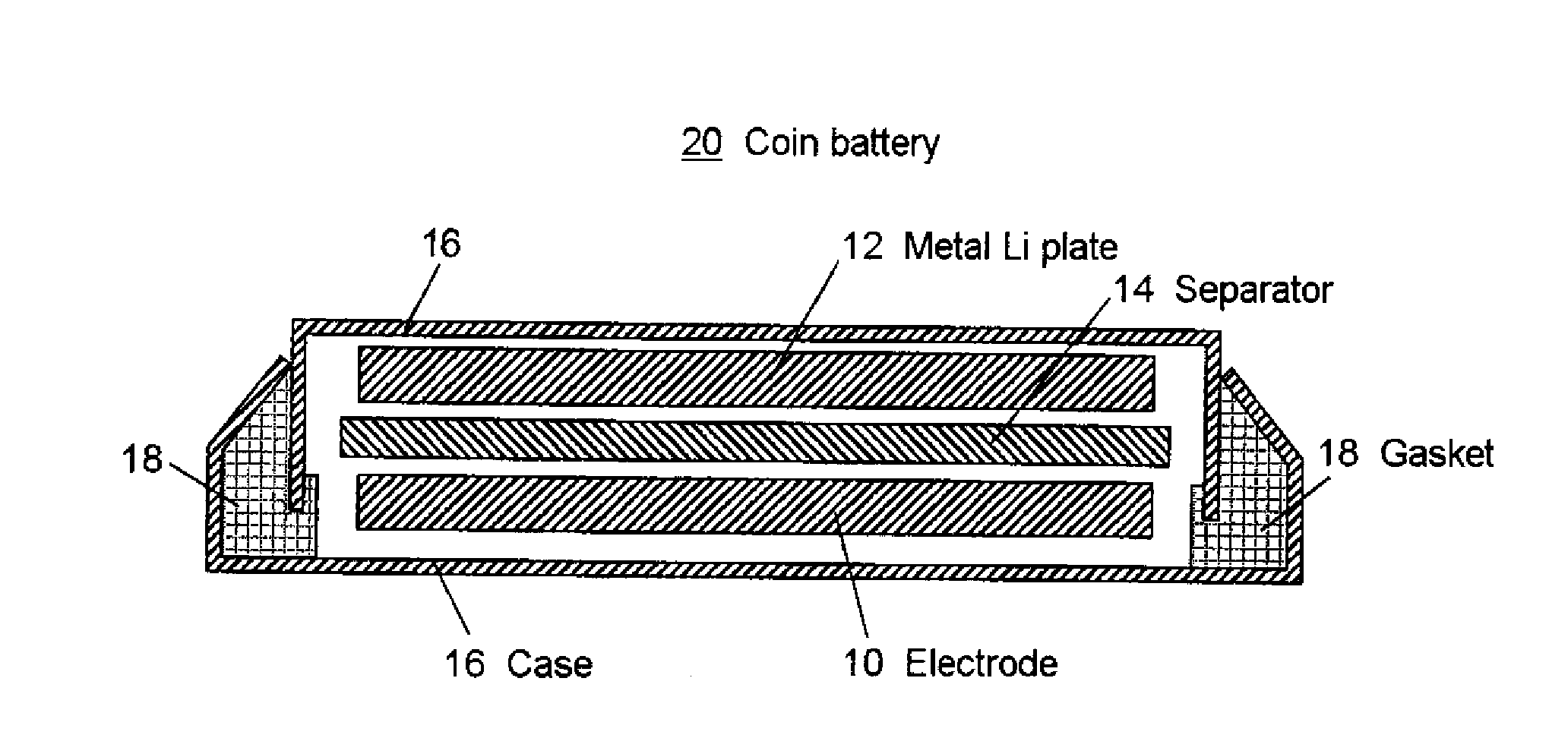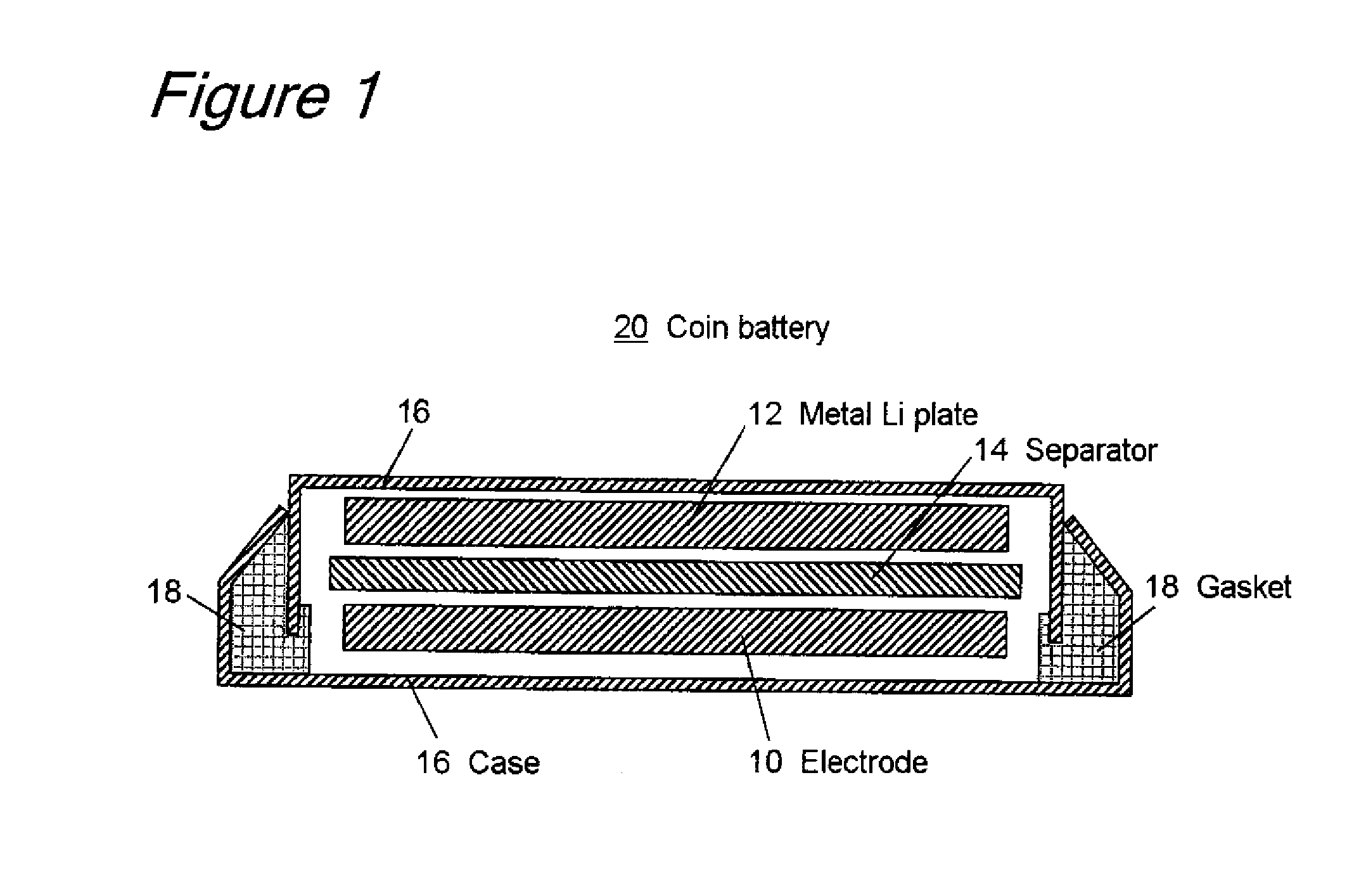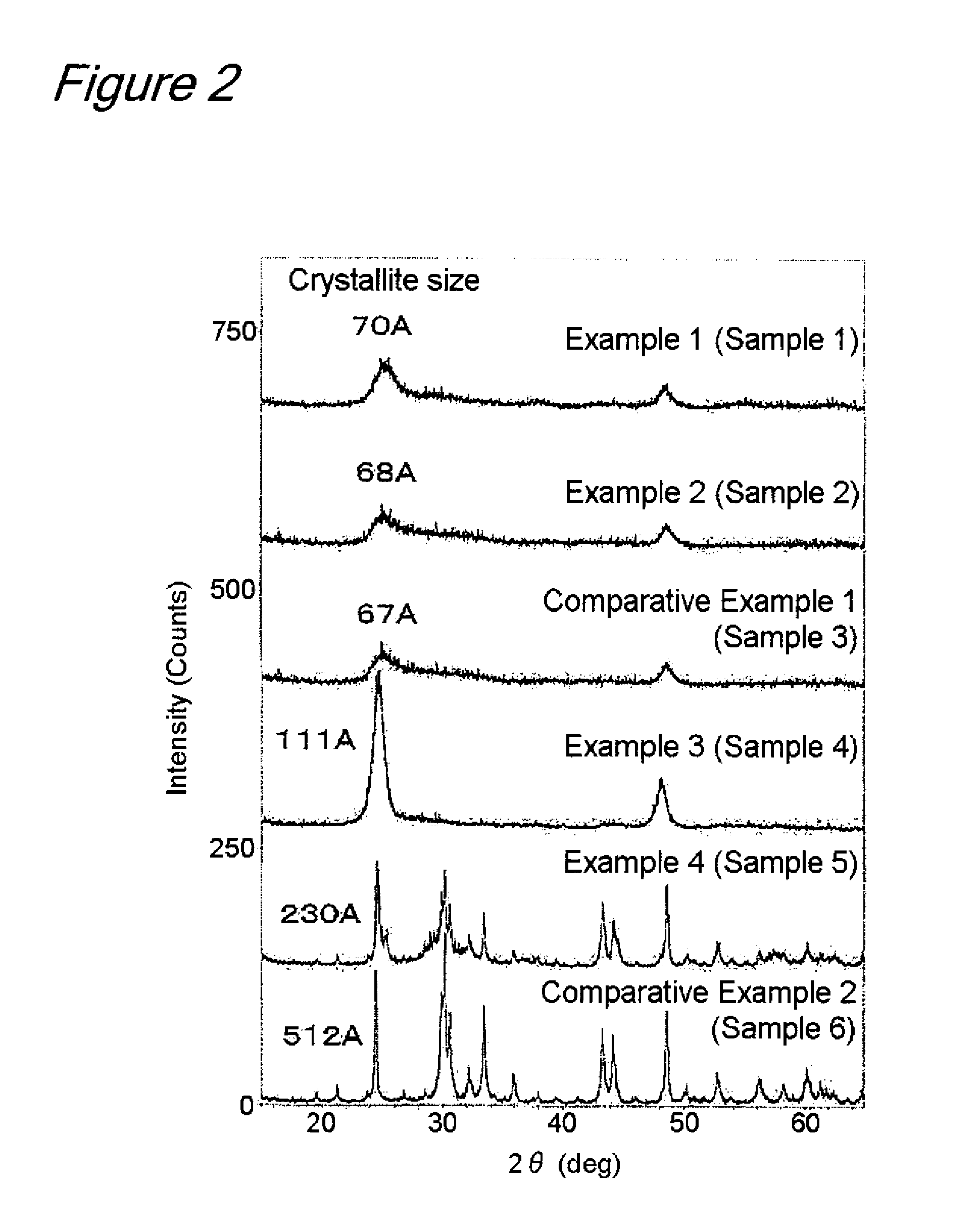Titanium Oxide Compound For Use In Electrode And Lithium Secondary Battery Comprising The Same
a lithium secondary battery and titanium oxide technology, applied in titanium compounds, alkali titanates, cell components, etc., can solve the problem of insufficient electric capacity of conventional lithium secondary batteries, and achieve the effect of increasing energy density and charging/discharge capacity
- Summary
- Abstract
- Description
- Claims
- Application Information
AI Technical Summary
Benefits of technology
Problems solved by technology
Method used
Image
Examples
example 1
[0062]After microparticulate hydrous titanium oxide obtained by hydrolysis of titanyl sulfate was dispersed in water to give a slurry, aqueous sodium hydroxide was added at a Na / Ti molar ratio of 2.0 and reacted at 90° C. for 24 hours. The reacted product was filtered, washed, adjusted to pH 2 with sulfuric acid and maintained for 24 hours. The product was then filtered, washed and heat-treated at 250° C. for 2 hours to obtain Sample 1. Sample 1 thus obtained was measured for its specific surface area by the BET single-point method with a Micromeritics Gemini 2375. To determine the crystallite size, a diffraction pattern was measured with a TTRIII (Rigaku Corporation, Japan) using a Cu target over a 2θ range of 20° to 30°, followed by calculation according to the Scherrer method. The battery characteristics were measured by the following procedures. This sample (82 parts by weight), acetylene black (9 parts by weight) and polyvinylidene fluoride (9 parts by weight) were mixed and th...
example 2
[0064]The same procedure as shown in Example 1 was repeated to obtain Sample 2, except that the pH was adjusted to 4 with sulfuric acid. The results obtained are shown in Table 1. The X-ray diffraction pattern obtained is shown in FIG. 2. Sample 2 was found to have a crystallite size of 68 Å and a specific surface area of 345 m2 / g. Sample 2 was also found to have a water content of 13.8 wt % and a Na2O content of 3.57 wt %, indicating that a and b in TiO2.(H2O)a.(Na2O)b were 0.74 and 0.06, respectively. FIG. 6 shows the discharge curve of this sample. The discharge capacity was 280 mAh / g in the first cycle and 200 mAh / g in the third cycle, thus confirming that this sample ensures a high capacity of 200 mAh / g or more.
example 3
[0066]The same procedure as shown in Example 1 was repeated to obtain Sample 4, except that the heat treatment was performed at 400° C. The results obtained are shown in Table 1. The X-ray diffraction pattern obtained is shown in FIG. 2. Sample 4 was found to have a crystallite size of 111 Å and a specific surface area of 159 m2 / g. Sample 4 was also found to have a water content of 8.9 wt % and a Na2O content of 0.74 wt %, indicating that a and b in TiO2.(H2O)a.(Na2O)b were 0.44 and 0.01, respectively. FIG. 8 shows the discharge curve of this sample. The discharge capacity was 270 mAh / g in the first cycle and 226 mAh / g in the third cycle, thus confirming that this sample ensures a high capacity of 200 mAh / g or more.
PUM
| Property | Measurement | Unit |
|---|---|---|
| 2θ | aaaaa | aaaaa |
| 2θ | aaaaa | aaaaa |
| specific surface area | aaaaa | aaaaa |
Abstract
Description
Claims
Application Information
 Login to View More
Login to View More - R&D
- Intellectual Property
- Life Sciences
- Materials
- Tech Scout
- Unparalleled Data Quality
- Higher Quality Content
- 60% Fewer Hallucinations
Browse by: Latest US Patents, China's latest patents, Technical Efficacy Thesaurus, Application Domain, Technology Topic, Popular Technical Reports.
© 2025 PatSnap. All rights reserved.Legal|Privacy policy|Modern Slavery Act Transparency Statement|Sitemap|About US| Contact US: help@patsnap.com



